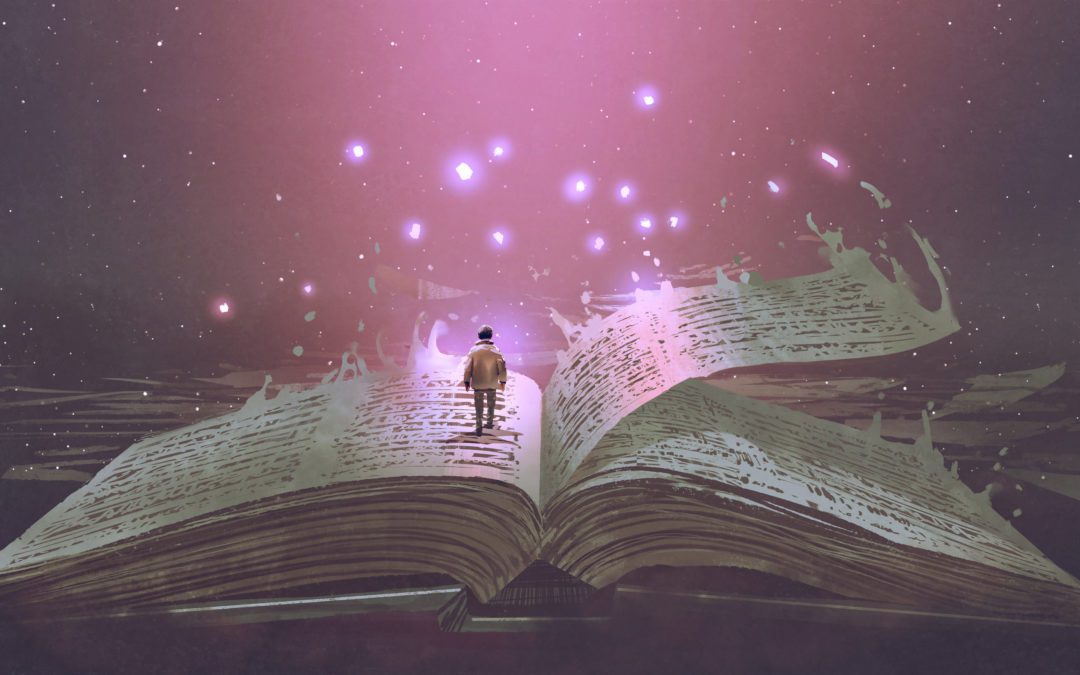Hi. 🤓 Dave here.
This is the third issue of The Saturday Storyteller.
Each Saturday morning, I share creative writing tips on how to craft stories that connect.
This week’s tip has a reading time under 4 minutes.
Keep creating!
I broke up with my girlfriend on her birthday.
Sorry Heather. 😔
It happened in Middle School… All our friends were at her house for a pool party. And while everybody else swam, I sat alone staring at my gift.
Because taped to the wrapped perfume was my card that read, “Sorry things didn’t work out.”
I planned to talk to her before leaving, but I chickened out. And she didn’t open her gifts at the party so when we talked later, she asked about my card.
“Well…”
It turned out I was an idiot. But more than anything else, I was a frightened fool.
Because the chance of being rejected absolutely terrified me.
So whenever I faced anyone who may not accept me, I opted for self-sabotage and bailed before they could.
Looking back, I wonder if I saw through anything before my early 20s.
I quit basketball tryouts before the coach could cut me. I broke up with girlfriends before they could dump me. I even stopped writing my first big story before readers could criticize it.
Fear has been the primary villain in the story of my life.
At least I know how fear fits into my life because recognizing its role helps me navigate its threat.
And this irregularly scheduled moment of self-actualization brings us to the next element in your story’s heart. And it’s a performance you need to fulfill better than your hero’s.
Because your primary villain serves as the most important character in your story.
villain vil-uhn
noun
: a dramatic or fictional character who opposes the hero and creates conflict in a story
Your core villain carries more responsibility than any other role including your hero’s.
Because your villain pushes your hero to actually become “the hero” by standing in direct opposition of their overarching story goal (their one clear-cut story objective). If your villain appears weak or unconvincing, then your hero will reach their story goal with relative ease.
That’s not heroic.
It’s boring.
Any chance you spend way more time creating your hero than your villain?
You wouldn’t be the first. Or last.
Although this oversight compels villains to get chippy and write open letters.
Because just like your hero, your core villain requires a story goal. And at this stage, it needs to be a wicked simple one that directly opposes your hero’s overarching story goal.
This direct opposition is one example of what people mean when they repeat the cliché that “story is conflict.”
Let’s compare the story goals of heroes and villains by looking at examples from best-selling novels:
Examples from Best-selling Novels:
The Lord of the Rings by J.R.R. Tolkien
- Hero: Frodo Baggins
- Story Goal: Destroy the ring to save Middle-earth
VS.
- Villain: Sauron
- Story Goal: Obtain the ring to enslave Middle-earth
Gone Girl by Gillian Flynn
Hero: Nick Dunne
Story Goal: Prove innocence in his wife’s disappearance
VS.
Villain: Amy Dunne
Story Goal: Frame husband for her disappearance
The Hunger Games by Suzanne Collins
Hero: Katniss Everdeen (the Mockingjay)
Story Goal: Survive the games & rebel against President Snow’s dictatorship
VS.
Villain: President Snow
Story Goal: Keep control of Panem & end the legacy of the Mockingjay
The Maze Runner by James Dashner
Hero: Thomas
Story Goal: Escape the imprisonment of the Maze
VS.
Villain: Grievers
Story Goal: Contain all Gladers in the Maze
Ender’s Game by Orson Scott Card
Hero: Ender Wiggins
Story Goal: Destroy the alien species called “buggers” (Formics)
VS.
Villain: Buggers (Formics)
Story Goal: Terminate the human race
The above examples are simplified to their roots, but that’s exactly what you need to be able to do with your hero, villain, and their relative story goals.
Because if you can’t easily summarize their goals in your story’s heart, you’ll have a tough time fleshing out everything while building your overarching plotline.
Bottom line, your entire story depends upon the conflict created by your villain.
So do your hero, your readers, and yourself a favor by crafting a driven villain.
Take Action:
1. Who is your story’s central villain?
2. What is their simple story goal?
3. How does your villain’s story goal directly oppose your hero’s story goal?
——
Also, whenever you’re ready… I’m still offering free 30 minute story coaching sessions… so let’s connect and clarify your characters’ story goals or any other component to create a cohesive storyline.
That’s it for this Saturday, one simple creative storytelling tip.
If you enjoyed this post, please consider sharing it. Maybe you’ll be helping someone create the story they’ve always wanted to write?
Easy social shares: Twitter or Facebook
See ya next week!
Peace.
— David “Chillin like a Villain” Villalva

